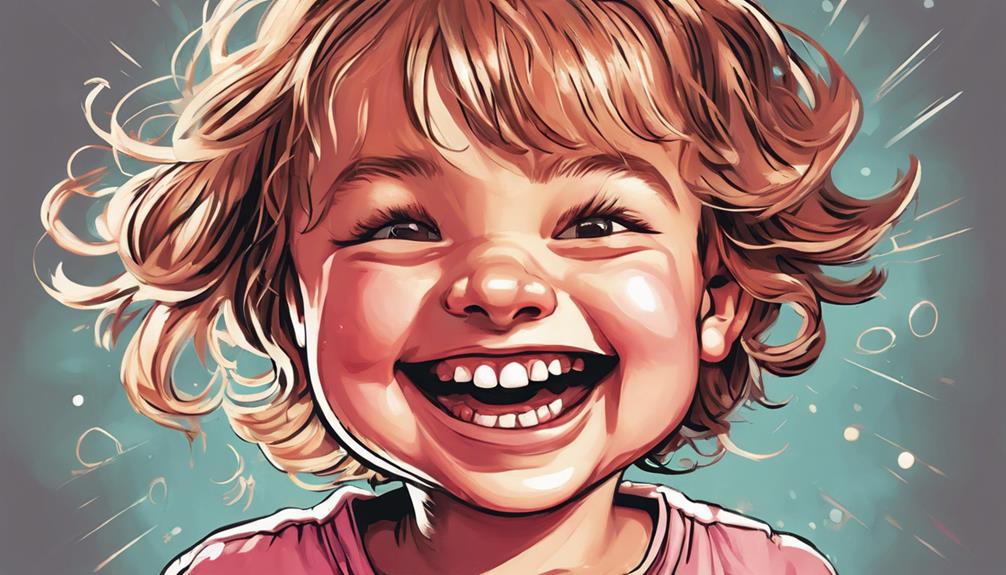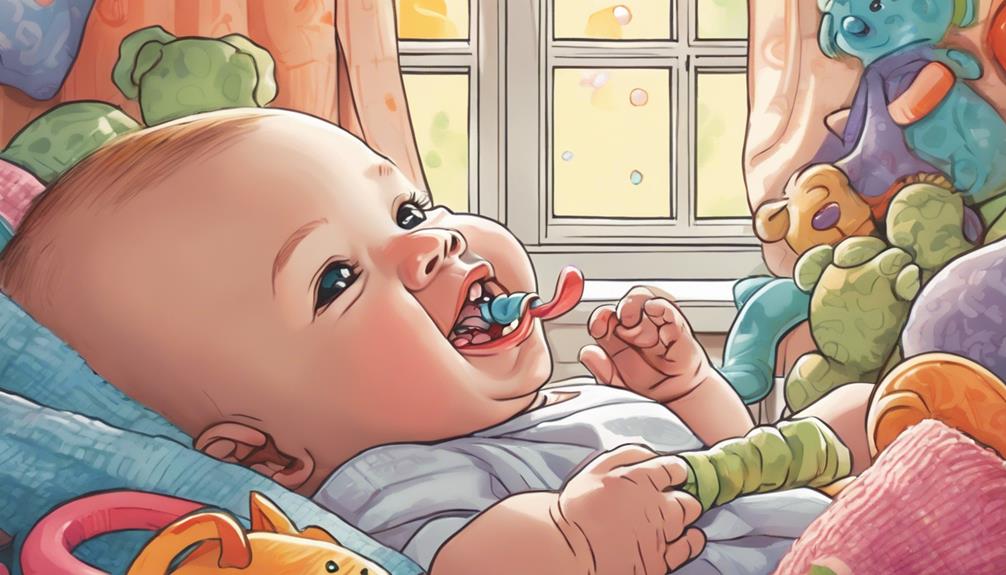Baby teeth, also known as primary or deciduous teeth, are your child's first set of teeth, totaling 20. They usually start to appear around six months old, with lower central incisors leading the way. By age three, your little one typically has a complete set. These teeth play a significant role in helping with speech development and chewing, ensuring your child gets the nutrition they need. Plus, they act as placeholders for the permanent teeth that will come later. If you're curious about how to care for these important little teeth, there's more to uncover! When caring for baby teeth, it’s important to establish a good oral hygiene routine early on, including brushing with a soft toothbrush and using fluoride toothpaste. It’s also essential to monitor the development of the primary teeth and schedule regular dental check-ups. Understanding the differences between baby teeth vs adult teeth can help parents and caregivers better care for and maintain the overall oral health of their children. Understanding baby teeth and their importance is key to ensuring your child’s overall health and development. These teeth are not only essential for chewing and speech, but they also guide the permanent teeth into their proper positions. By taking the time to learn about the specific needs of baby teeth, parents and caregivers can set their children up for a lifetime of good oral health. With proper care and attention, baby teeth can pave the way for a healthy smile for years to come.
Key Takeaways
- Baby teeth, also known as primary or deciduous teeth, typically emerge around six months of age.
- There are a total of 20 baby teeth, including incisors, canines, and molars.
- Baby teeth play a crucial role in speech development and proper nutrition.
- They serve as placeholders for permanent teeth, guiding their alignment and structure.
Overview of Baby Teeth
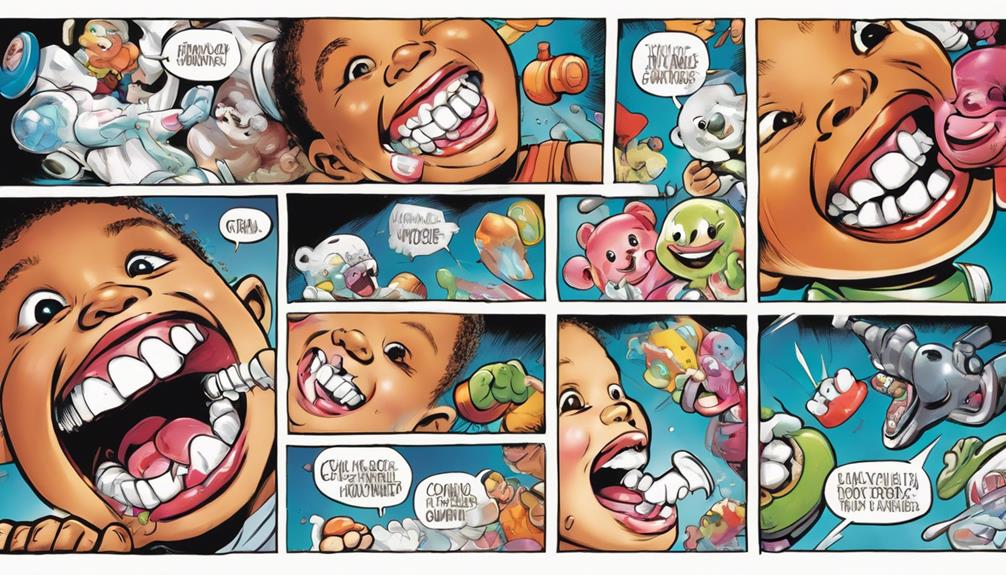
Baby teeth, often referred to as primary or deciduous teeth, typically emerge around six months of age and play a vital role in your child's development. These baby teeth consist of a total of 20, including lower central incisors, which are usually the first teeth to appear. By age 2.5 to 3 years, your child should have a complete set of primary teeth, which greatly contribute to speech development and proper nutrition.
Using a teeth eruption chart can help you track when each tooth is expected to come in. It's essential to recognize that baby teeth serve as placeholders for permanent teeth, guiding their alignment and overall dental structure as they emerge. This connection between baby and permanent teeth highlights the significance of maintaining good dental health from an early age.
While the timing of tooth eruption can vary from child to child, understanding the importance of baby teeth guarantees you provide the best care for your child's oral health. By promoting healthy habits early on, you set the stage for a lifetime of strong, healthy permanent teeth.
Order of Teething

The order in which your child's teeth erupt follows a predictable pattern, starting with the lower central incisors around six months of age. These are usually the first teeth to appear, marking the beginning of your child's journey into teething.
As they grow, you'll notice the upper central incisors emerge next, typically between eight and twelve months. Following this, the lateral incisors come in around nine to thirteen months.
By the time your child is about one to two years old, you can expect the first molars to come in, usually around thirteen to nineteen months. The canines typically follow, appearing between sixteen and twenty-two months.
Finally, the second molars complete the set of 20 deciduous teeth, usually around two to three years of age.
Understanding the order of teething can help you anticipate when your child will experience discomfort. Remember, every child is unique, and while this timeline serves as a guideline, the exact age for each tooth can vary.
Be patient and supportive as your child navigates this important developmental stage!
Importance of Baby Teeth
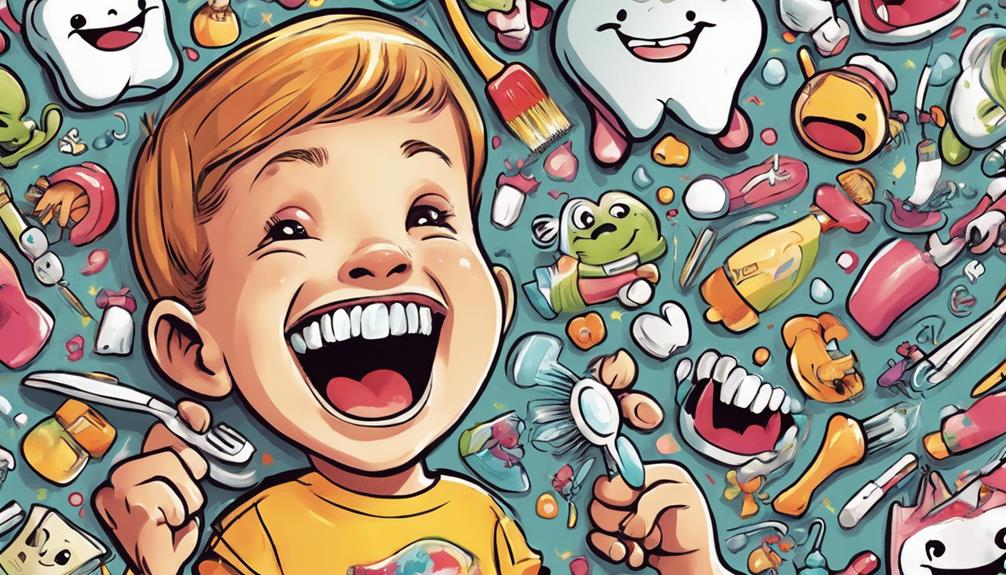
Primary teeth play an important role in your child's development, influencing everything from speech to proper nutrition. Baby teeth, or primary teeth, help your child articulate sounds and words correctly, laying the foundation for effective communication. They also support proper chewing, allowing your little one to enjoy a variety of nutritious foods necessary for healthy growth.
Moreover, these teeth act as placeholders for permanent teeth developing beneath the gums. They guarantee adult teeth emerge in the correct position, promoting proper alignment and reducing the risk of orthodontic issues later in life. Healthy baby teeth contribute to a child's overall facial structure and appearance, shaping their smile and boosting their confidence.
It's essential to prioritize oral health during this stage. Maintaining healthy baby teeth prevents dental problems like decay, which can adversely impact the underlying permanent teeth. Regular health care and check-ups will help you monitor your child's dental development and address any concerns promptly.
Dental Care for Children

Establishing good dental care habits early sets the foundation for a lifetime of healthy smiles. You should start brushing your child's teeth as soon as those first teeth erupt, usually around the age of six months. This includes the two bottom front teeth that will come in first. By the time your child is three years of age, they'll have a set of baby teeth filling their upper jaw and lower jaw.
Regular dental check-ups are recommended starting from age one. These visits to a First Dental provider help monitor your child's oral health and development. Daily brushing with fluoride toothpaste is essential, and you should teach your child proper brushing and flossing techniques when they've multiple teeth.
Additionally, limiting sugary snacks and drinks can greatly reduce the risk of cavities, which are common in children. To instill lifelong oral care practices, monitor your child's dental hygiene habits for effectiveness.
If you have any questions or need more health information, don't hesitate to ask your dentist. With the right approach, you'll nurture your child's dental health for years to come.
Common Dental Issues
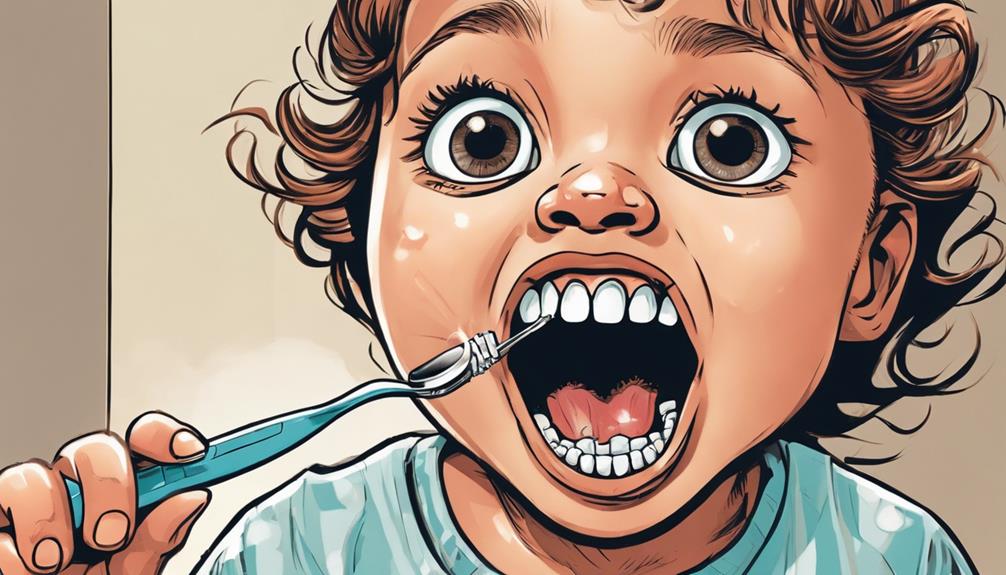
Cavities often plague children due to high sugar intake and inconsistent brushing habits. These dental issues can lead to early loss of baby teeth, which can disrupt the alignment of permanent teeth. This misalignment might necessitate orthodontic treatments down the line, so it's vital to maintain good oral hygiene from a young age.
Another common concern is gingivitis, where neglected oral hygiene results in swollen and bleeding gums. If left untreated, it can progress to more severe periodontal disease, affecting overall dental health.
Additionally, dental anxiety is prevalent among children, making it important for you to create a positive environment around dental visits.
You should also be aware of thumb sucking. While it's a natural habit in infants, if it continues past a certain age, it can negatively impact dental development, leading to misalignment of teeth and changes in mouth shape.
Addressing these common dental issues early on helps set your child up for a healthier smile. Encourage regular dental check-ups and emphasize the importance of proper brushing techniques to combat cavities and guarantee peak oral health as your child grows.
Frequently Asked Questions
Which Teeth Are Baby Teeth and Fall Out?
You'll notice baby teeth, like lower central incisors and upper central incisors, start to fall out first around ages 6 to 7. They eventually lose lateral incisors, canines, and molars in a specific order.
What Teeth Are My Baby Teeth?
Ever wonder if your mouth's a treasure chest? Your baby teeth, those tiny gems, include incisors, canines, and molars. They're just waiting to shine before making way for your magnificent adult smile!
Which Teeth Fall Out at Age 10?
At age 10, you'll likely start losing your lateral incisors, both upper and lower. This process typically follows the consistent pattern of shedding baby teeth, ultimately leading to adult teeth taking their place.
When Do Baby Teeth Fall Out Chart?
Did you know most kids lose about 20 baby teeth? Typically, they start falling out around age 6, following a specific order. A chart can help you track this exciting dental change!
Conclusion
In wrapping up, remember that baby teeth play a pivotal role in your child's dental development.
These tiny treasures not only pave the way for permanent pearly whites but also impact speech and self-esteem.
By prioritizing proper dental care, you can prevent pesky problems down the line.
So, stay savvy and schedule those check-ups!
With a little love and attention, you'll help your little one shine with a stunning smile that lasts a lifetime.
